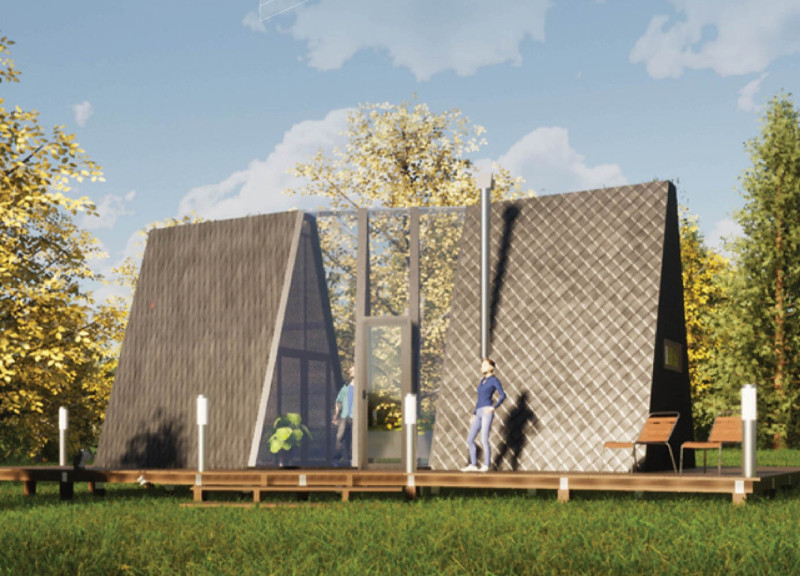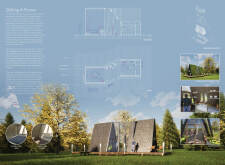5 key facts about this project
The Shifting A-Frame project offers a modern take on the traditional A-Frame house, emphasizing adaptability and sustainability. It is designed with a central covered courtyard that separates distinct areas for working, resting, and essential functions like the kitchen and bathroom. This arrangement enhances the home's connection to nature and maximizes the use of space.
Design Layout
The structure maintains the classic A-Frame shape but adds modular elements that allow it to adapt to different settings. The central courtyard serves as a vital feature, bringing natural light and fresh air into the living spaces. This separation of functions not only improves usability but also provides an area for gardening, contributing to the overall ecological goals of the home.
Material Selection
The choice of materials in the project supports its durability and visual appeal. The exterior is framed with Alaskan cedar, offering resistance to various weather conditions while giving the house a warm look. Inside, simple plywood is used for furniture, promoting a minimalist approach that remains functional and comfortable for daily life.
Energy Efficiency
Energy efficiency is a key focus of the design. The southern side is clad with solar shingles which help meet the energy demands for heating and electricity. The northern side features a green moss roof that enhances insulation, showcasing the commitment to sustainability in the project. These elements work together to lower the energy consumption of the home.
Multifunctional Spaces
The interior layout emphasizes versatility with the inclusion of multifunctional furniture. Beds can fold up, allowing the space to shift from sleeping to relaxing areas as needed. Tables can also be stowed away to open up the area for other activities. This thoughtful approach to design caters to modern living requirements, where flexibility is essential.
The project invites interaction with both indoor and outdoor environments, creating a unique experience through shifting views and connections to the natural landscape.



















































